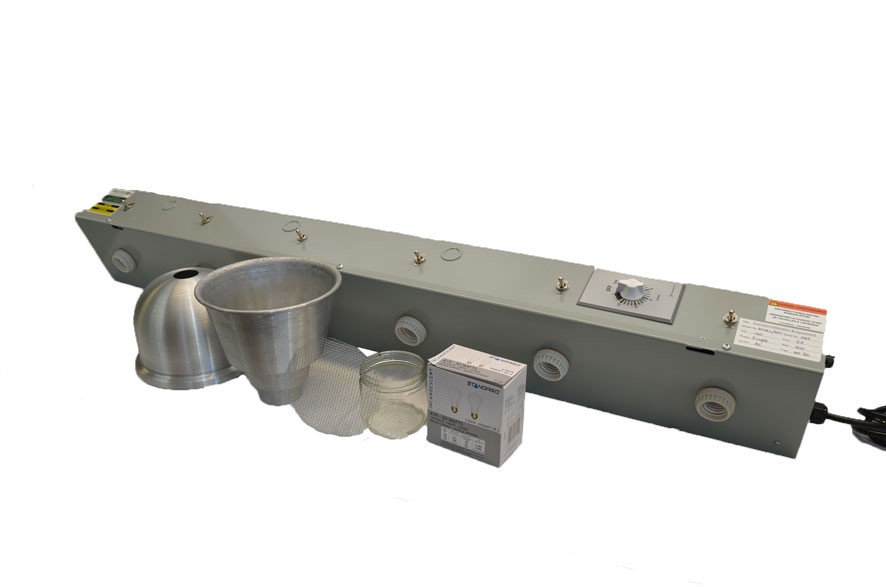Berlese funnel units
The Berlese funnel extraction method was developed in the late 1800’s and remains an industry standard.
The Berlese funnel extraction method is a simple way to determine if there are live insects in a sample of grain.
Grain in the funnel sits beneath an incandescent bulb. At the base of the funnel is a mesh screen with holes large enough for insects to pass through, yet small enough to contain the grain inside the funnel. Below the funnel is a jar that contains a mixture of alcohol and water.
To perform the test, simply set the timer for eight hours to activate the lights. Any live insects in the grain sample will naturally move away from the heat of the light bulb, and are captured in the jar where they perish due to the alcohol.
Units are available with two, four, or six light sockets. Each unit comes complete with everything you need: certified light fixture, 50-watt incandescent bulbs, funnels, reflective light domes, jars, mesh screens, and a timer.
Wherever you mount the light fixture, be sure there is 2.5 cm (1”) space between the bottom of the reflective dome and the top of the funnel.
The Canadian Grain Commission uses the Berlese funnel method to extract insects from many different types of samples.

